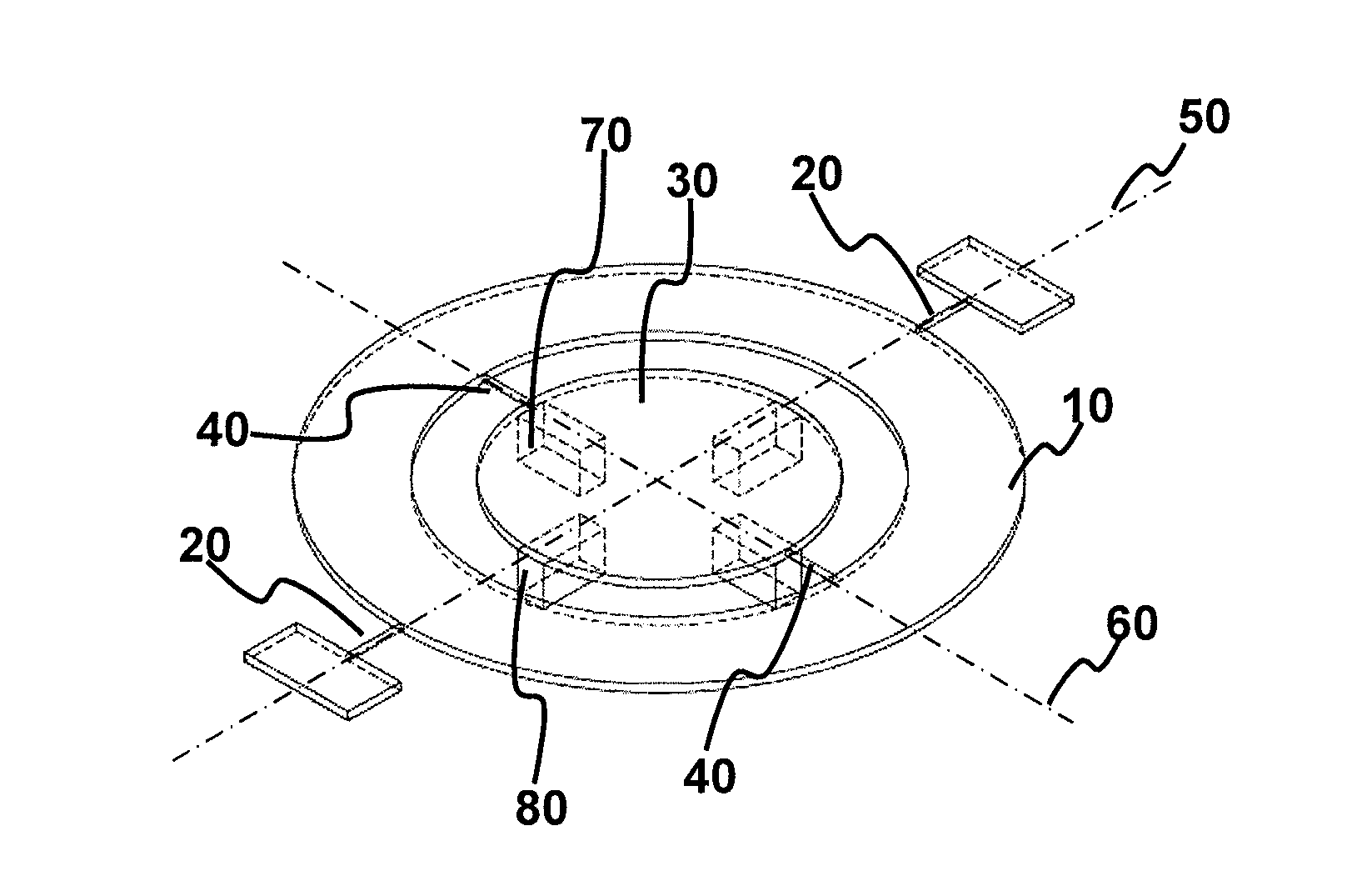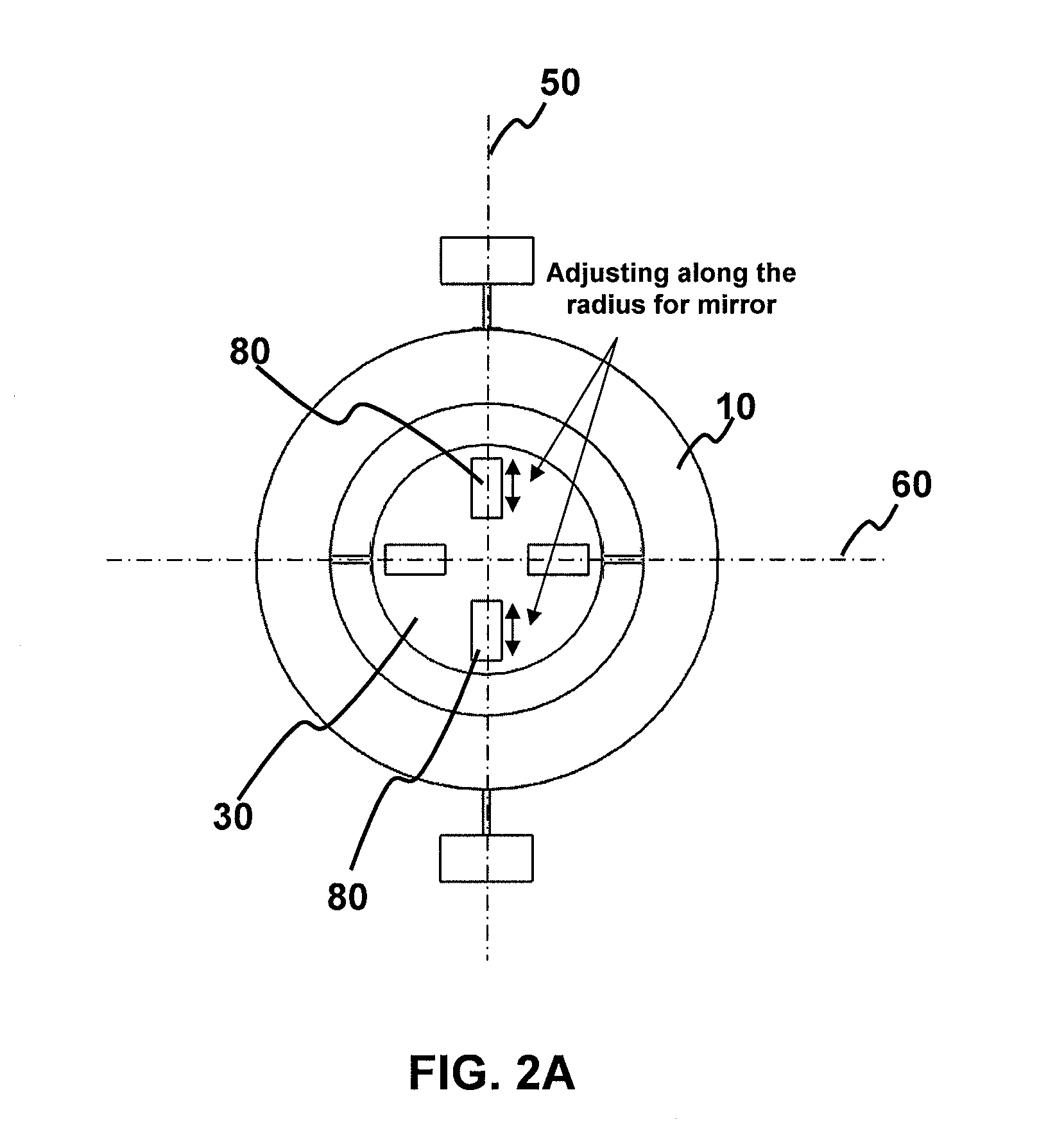Biaxial scanning mirror having resonant frequency adjustment
a scanning mirror and resonant frequency technology, applied in the field of microelectromechanical systems, can solve the problems of increasing the cost of mems devices, not easy to achieve a large amplitude/scanning angle for a large-area mirror plate mems device, etc., and achieves a large amplitude/scanning angle, large scanning angle, and increased damping force
- Summary
- Abstract
- Description
- Claims
- Application Information
AI Technical Summary
Benefits of technology
Problems solved by technology
Method used
Image
Examples
Embodiment Construction
[0028]Turning now to the drawings in detail, FIGS. 1A and 1B show an embodiment of a biaxial MEMS structure. The principal features of the MEMS structure are gimbal 10, gimbal torsional bars 20, mirror plate 30, and mirror plate torsional bars 40. Gimbal 10 is rotated by gimbal torsional bars 20 about a gimbal axis of rotation 50. Similarly, mirror plate 20 is rotated by mirror plate torsional bars 40 about a mirror plate axis of rotation 60.
[0029]One or more blocks 70 and one or more blocks 80 are positioned underneath the mirror plate in order to affect the moment of inertia and, thereby, the resonant frequency of the mirror plate. Note that in the exemplary embodiments the blocks are positioned on the rear surfaces of the mirror plate and / or gimbal; however, the blocks may optionally be positioned on the front surfaces of the mirror plate and / or gimbal with the same effect. The effect of the blocks on the moment of inertia is explained as follows. In a rotation dynamic, the momen...
PUM
 Login to View More
Login to View More Abstract
Description
Claims
Application Information
 Login to View More
Login to View More - R&D
- Intellectual Property
- Life Sciences
- Materials
- Tech Scout
- Unparalleled Data Quality
- Higher Quality Content
- 60% Fewer Hallucinations
Browse by: Latest US Patents, China's latest patents, Technical Efficacy Thesaurus, Application Domain, Technology Topic, Popular Technical Reports.
© 2025 PatSnap. All rights reserved.Legal|Privacy policy|Modern Slavery Act Transparency Statement|Sitemap|About US| Contact US: help@patsnap.com



